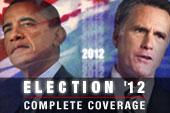Republican presidential candidate Mitt Romney’s impolitic comments at a fundraiser in Florida last May shed light on his attitude toward the 46 percent of the population that paid no federal income tax in 2011 (his 47 percent came from an earlier study by the Tax Policy Center, since updated). He called them “takers” and all but accused them of mooching off the rest of society.

As numerous news outlets have pointed out in the wake of those comments’ release, about half the households in the group paid no income tax because the standard deduction put them below the taxable threshold. Three-quarters of the other 38 million households were either elderly or in families that received refundable tax credits for their school-age children or as supplements to their income – the so-called earned income tax credit.
In other words, they paid no taxes because they benefited from tax expenditures, exclusions and deductions in the tax code that lower personal income taxes.
If that is “taking,” how does that compare with Romney’s 53 percent or, for that matter, with Romney himself?
The Tax Policy Center has a detailed study of the distribution of tax expenditures, which in addition to the earned income tax credit includes reduced tax rates on capital gains, exclusion of retirement savings and the deductions for charitable giving and home mortgage interest that reduced household federal income taxes by $1.08 trillion in 2011.
It found that the top 1 percent of filers earning over $400,000 raked in 23.9 percent or about $258 billion in reduced taxes through deductions and exclusions. The top 10 percent of filers took in 40.3 percent, or more than $435 billion.
On the other hand, the bottom 60 percent of tax filers, which includes more than 99 percent of the people who paid no income tax last year (the non-paying group also included 7,000 millionaires), grabbed just 20.1 percent of the tax reductions from deductions and exclusions. That was worth $217 billion or half of what was claimed by far fewer top earners in the U.S.
“If you counted tax expenditures as a form of spending, then the rich would be paying a lot more in taxes,” said Eric Toder, a fellow at the Urban Institute and co-author of a study on the distribution of tax expenditures. “If you didn’t have tax expenditures, the tax system would be more progressive than it is today.”
Two factors drive the skewing of tax expenditures toward the well-off. First, the more money you make, the more likely you are to engage in activities the tax code favors, whether it is saving for retirement, purchasing expensive homes with larger mortgages or giving to a favored charity.
Second, people in high income tax brackets get a higher percentage of their deductions returned in the form of lower taxes. A dollar given to charity by someone in the 35 percent tax bracket reduces federal taxes on that income by 35 cents, while a dollar given to charity by someone in the 10 percent tax bracket only reduces their taxes by a dime.
Some tax-favored activities are almost entirely the province of the well-to-do. For instance, the capital gains and dividends exclusion – it is taxed at a flat 15 percent rate instead of normal rates – reduced taxes by $77.7 billion in 2011. Fully three-quarters of that tax break went to filers in the top 1 percent of the income distribution. The bottom 60 percent of the population received just 1.1 percent of its benefits.
Romney, who includes himself among the makers, is a major beneficiary of this special treatment in the tax code. It was among the many tax breaks that allowed him to pay an effective tax rate of 13.9 percent in 2010, far below the statutory 35 percent that would normally be applied to his $21.6 million in income.





